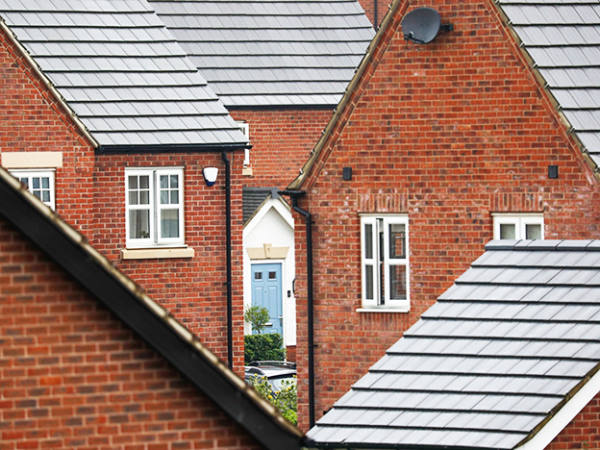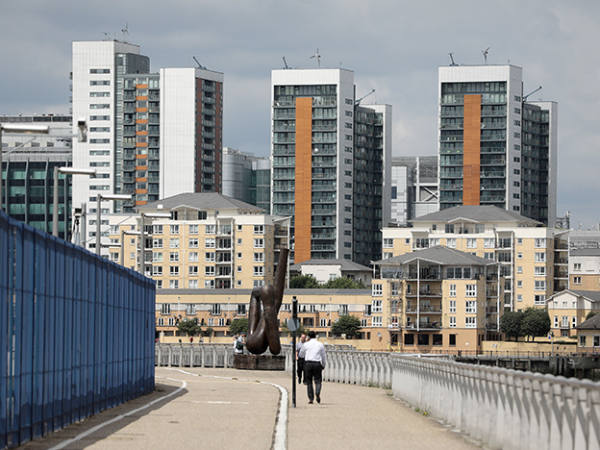The private rental sector accounted for the highest proportion of investors’ property portfolios at the end of last year, according to research from Knight Frank. It was also the area of real estate piquing the most interest. Meanwhile student accommodation landlords are well established on London’s public markets and have been joined over the past five years by social housing and care home landlords, which have tapped into investors’ desire for generous inflation-linked dividends.
The senior living market is a laggard. While institutional investment into developing retirement housing with care provided is rising, the market for property specifically targeting those in later stages of their lives is small. Choices include retirement housing built by providers such as McCarthy Stone and Churchill Retirement, which have attracted criticism over high service charges and poor resale values, and traditional care homes for those where independent living is not an option.
At the end of last year, there was a supply of 78,383 homes for senior living, according to Knight Frank, yet a total population of over 65s of 12.4 million. Based on a household size of 1.3 adults, this gives the UK a penetration rate of just 0.82 per cent, the real estate services group estimated. This compares with penetration rates for Housing with Care schemes in Australia, New Zealand and the United States of 5 per cent, 5.5 per cent and 6 per cent, respectively.
Indeed, the dearth of available homes is incongruous in the context of the UK’s ageing population. There is also the question of how building more housing for retirees could help tackle the country’s housing crisis by freeing up family homes. A joint report by Cass Business School, the Association of Retirement Community Operators (ARCO) and the Centre for the Study of Financial Innovation argued that greater investment in senior housing that also provides care services would encourage older people to downsize.
What are the options?
One of the most established UK operators is McCarthy Stone, which built its first retirement development in Hampshire in 1977. The group, which was taken private for a second time last year, made its name building retirement communities and selling the homes on a leasehold basis. The group has since begun increasing the number of homes it builds for rent and for part-ownership. Between a quarter and a third of developments over the last 18 months have been rentals, the group says.
Property owners pay a service charge – and they can be burdensome, to say the least. For the standard retirement apartments aimed at the over 60s, homeowners pay an average £48.93 a week for a one-bedroom apartment and £73.36 a week for a two-bedroom apartment, or just over £2,500 and £3,800 annually, respectively.
For ‘Retirement Living Plus’ apartments, which are aimed at the over 70s, the cost is much more pricey at £138.27 a week for a one-bedroom apartment and £184.31 a week for a two-bedroom apartment. That translates to up to a considerable £9,500 a year for a two bedroom property, which could mean a buyer spending their entire state pension on service charges alone.
Admittedly, the ‘Retirement Living Plus’ option includes some additional facilities such as having staff on site 24/7, a bistro/restaurant and one hour of domestic assistance a week. Buildings insurance and water rates are included but all other utility bills and council tax are on top – would-be buyers may want to consider how much value for money they are getting.
“They are the costs that are being incurred, that’s the issue here,” says chief executive John Tonkiss, referring to the fact that the group sources quotes for services such as the maintenance of communal areas and gardens, from third-party companies.
The group is also considering introducing deferred management fees – otherwise known as exit fees. “It means you don’t have to have the income or to have released some of the wealth from your property,” says Tonkiss.
However, there is also ground rent to pay, which is set at an average £460 a year and sometimes sold to a third-party investor. McCarthy Stone emphasises that it retains the head lease in all managed developments and the freeholder cannot change any of the terms of the lease. The rate is fixed for 15 years, which is longer than the average stay of its residents, the group says. Increases are linked to inflation, or 2 per cent if higher, and compounded annually.
Ground rent is one cost that is set to be removed for future buyers. At the start of this year the government announced that the retirement housing sector would also face a ban on ground rents, “so purchasers of these homes have the same rights as other homeowners and are protected from uncertain and rip-off practices”. However, it is not expected to be retrospectively applied.
Tonkiss argues that the cost helps pay for the construction of shared facilities, which account for 30 per cent of total floorspace in retirement communities, much more than standard flats. “It's been a good way of subsidising the viability challenges of building a retirement community,” he says.
Will properties hold their value?
However, the high costs associated with occupying one of the group’s retirement properties is not the only reason would-be buyers might be cautious. For some properties built and sold prior to 2010, when all developments were managed by third-party companies, resale values have been disappointing.
“I am used to seeing 40 per cent drops in value on these retirement flats. Many sell for even less than that,” says Sebastian o’Kelly, chief executive of the Leasehold Knowledge Partnership and Better Retirement Housing.
The group’s Bridewell Court development in Widnes, Cheshire is one example. Many of the flats have been resold at markedly lower values. A one-bedroom flat was sold as recently as August last year for just £90,000, according to the Land Registry, substantially below the £150,950 it was initially bought at when construction was completed in 2005.
McCarthy Stone stresses that Bridewell Court was sold to Fairhold Homes in December 2005 and the development is managed by First Port. All sites built since 2010 are wholly owned and run by McCarthy Stone as the landlord and managing agent.
“Most of the examples we know are from 2007/2008 when we went through the great financial crash,” counters Tonkiss. Urgency by sons or daughters to sell an inherited property meant they achieved a lower price than those in the wider market, who held-off from selling in a depressed market.
Since bringing management of the sites in-house in 2010 and increasing the number of services offered, the group has undertaken further steps to help boost the resale values of properties. Those include increasing the term of leases from an average 125 years to 999 years and launching an in-house resale business. Managed properties built since 2013 have recorded an average net price improvement on first resale of 3.8 per cent, it says.
It is also thinking of trialling a system where the service charge is halted while a property is on the market with its in-house resale business, in exchange for an additional 0.2/0.3 per cent of the property sales price. The measure could help reduce the pressure to sell too quickly, the group says.
O’Kelly agrees that the new strategy should ensure a better outcome for purchasers of these homes: “It’s now in the business of retaining lease management, rather than knocking out sales with income streams for someone else.”
Staying put
For those that want to stay in their own homes but unlock some of the wealth contained in the property, equity release – sometimes referred to as a lifetime mortgage – is another option. How much cash can be released depends on the value of your age and the value of your home.
Retirement Interest-Only Mortgages (RIO), which are also typically aimed at those over 55, are a newer set of products to enter the market. RIOs are similar to lifetime mortgages except the borrower must pay the interest on the amount borrowed each month. The mortgage is usually only paid off when the homeowner is deceased, moves into long-term care or sells the house.
A smaller number of lenders offering RIOs means less direct competition for business, which does mean that rates are higher than general interest-only mortgages, says Mortgage Advice Bureau (MAB1) proposition director, Steve Humphries. “RIOs make up a very small percentage of the mortgage market for several reasons such as the number of lenders in the market, extra financial underwriting checks and overall affordability,” he says.
Lenders carry out an additional affordability check compared with standard mortgages, interest-only or otherwise, financially underwriting each applicant independently from one another. “In other words, each applicant must be able to afford the repayments based on their own income should their partner no longer be around,” he says.
That can mean some borrowers fail the affordability check, which could prompt them to consider a lifetime mortgage. “Lifetime Mortgages have all the features of a RIO yet the customer doesn’t have to make interest payments unless they can afford and want to,” says Humphries.
However, that unpaid interest is added to the loan, meaning the debt can quickly rise and mean less to pass on via inheritance. Depending on a borrower’s age, LTVs on lifetime mortgages are generally comparatively lower, at up to 60 per cent. For RIOs, maximum loan-to-value ratios vary from 50 per cent, to some lenders now offering 75 per cent. (See more on RIOs on page xx, Four Alternatives to Equity Release).
At the other end of the spectrum, are care and nursing homes for those where independent living is not feasible. However, fees are costly, with the average care home place costing £600 a week and over £800 a week for a place in a nursing home, according to Age UK. Not only that, but the cost of residential care varies dramatically across the country, the charity says, creating a postcode lottery for vulnerable people.
Some may be eligible for funding support from their local council, but those with capital over £23,250 must pay full fees. The value of your property may be counted within the assessment of your capital.
Despite the high cost of residential care, there is still a shortage of modern, purpose-built homes. That is a gap that Reits such as Impact Healthcare Reit (IHR) and Target Healthcare Reit (THRL) are seeking to fill. The Reits acquire and develop care homes across the UK, which are then let to care operators.
Alongside the human tragedy that unfolded, the pandemic placed greater financial strain on care home operators. Alongside the additional costs associated with the virus such as personal protective equipment, an increase in deaths and restrictions on new residents entering homes mean occupancy across portfolios have declined since the start of last year.
For Impact Healthcare, rent cover – defined as tenants' pre-tax and pre-rent profitability divided by the amount of rent due on its homes – declined to a multiple of 1.68 at the end of the second quarter before recovering to 1.77 by the end of December. For its rival that multiple stood at a 1.5.
However, rent collection for both Reits has remained robust throughout the pandemic at 100 per cent of the amount due for Impact and 94 per cent for Target. For shareholders, that has translated into increases in already generous dividends.
New retirement communities
The opportunity available for long-term investors thrown up by a lack of dedicated retirement housing has not gone amiss. Institutional investors are being drawn to the sector. Last year a record £1.38bn was invested in the retirement with care sector, according to Knight Frank. Industry body ARCO draws a clear distinction between retirement housing with basic services and communities that include more extensive on-site facilities and care packages. It is this latter category that is attracting greater institutional capital.
One of the most prominent players is ARCO member Legal and General (LGEN), which develops later living communities via two brands, Inspired Villages and Guild Living. The former, launched in 2017, operates and develops in suburban and rural locations across the UK. Urban-focused Guild Living was established in 2019, with the aim of building over 3,000 new homes over the following five years, equating to a gross development value of around £2 billion.
“There’s an opportunity for very long-term cashflows, to maintain long term patient capital,” says Phil Bayliss, chief executive of Legal and General’s later living business.
The schemes are typically between 150 and 200 apartments, with a mix of independent and assisted housing. Around a quarter of each development is assigned to rental properties, with the remainder sold on a leasehold basis. Care packages are also offered and charged directly by the care provider to the resident, based upon how much support they need. Developments are built around a core building that has a reception, restaurant, bar and wellness facilities.
The aim is to offer enhanced facilities as standard, rather than the two-tier approach of traditional providers such as McCarthy Stone. An average service charge of £6,000 is levied annually regardless of the size of the property, which among other things includes maintenance of gardens and communal areas, access to the wellness centre including gym and pool and transportation for shopping trips or excursions.
There is also ground rent to pay, at an average £500 a year for existing residents. However, discussions were started two years ago around scrapping ground rent for future schemes, Bayliss says. That has started with Inspired Villages’ Ledian Gardens development in Kent, which opens later this year, where there will be no ground rent charges for residents.
A reassignment fee is charged at the point the property is sold, at a maximum 10-15 per cent of the sales price but is dependent on how long a resident has been living in the retirement community. “What that allows us to do within these places is to continue the wellness facilities and core buildings that we provide,” says Jamie Bunce, chief executive at Inspire Villages. That in turn helps homes in the retirement villages retain their resale values, he argues.
To that end, the businesses also refurbish all homes when they come up for sale, which Bunce. “They can know that when properties come up for resale it’s an A1 stock,” says Bunce.
Reform needed
Building more senior living housing, with care services attached, would go some way to addressing the issues of NHS bed blocking and a shortage of family housing stock. There is the desire there among some institutional investors. What could be done to aid supply?
The terms on which retirement housing is sold would be a start, according to ARCO. Retirement housing based on a leasehold model “is an aberration internationally”, says Michael Voges, executive director at ARCO, comparing the UK with markets in the US, Australia and New Zealand. Those countries have alternative tenure models known as occupational rights agreements or licenses to occupy.
A switch to these types of tenure would embed a clear service offering into the contract and allow any person who buys a property in a retirement community more control over the balance of fees and charges they might face, says ARCO head of policy and communications, Gareth Lyon.
“It would also ensure that the transactions were from an operator to consumer – rather than consumer to consumer if someone was selling on a lease – this would allow for more control over the process and more clarity and transparency at and before the sale,” he says.
Encouraging the development of more housing with care, as opposed to housing with no or fewer on-site facilities, could also provide better value for money upon sale of the property. Last year the average housing with care property had increased by 29 per cent since 2015 compared with a 22 per cent rise for the average mainstream apartment, according to JLL’s latest housing with care index. Units built by developers belonging to ARCO outperformed those that did not.
Despite the anticipated uptick in retirement housing with care provision, an ageing population means that in real terms the number of seniors housing units per 1,000 individuals aged 75 plus is expected to drop to 120 by 2024, according to Knight Frank, down from 137 in 2010 and 129 currently. Heavyweight investors seem to have a vital part to play in addressing the stark supply/demand imbalance.














